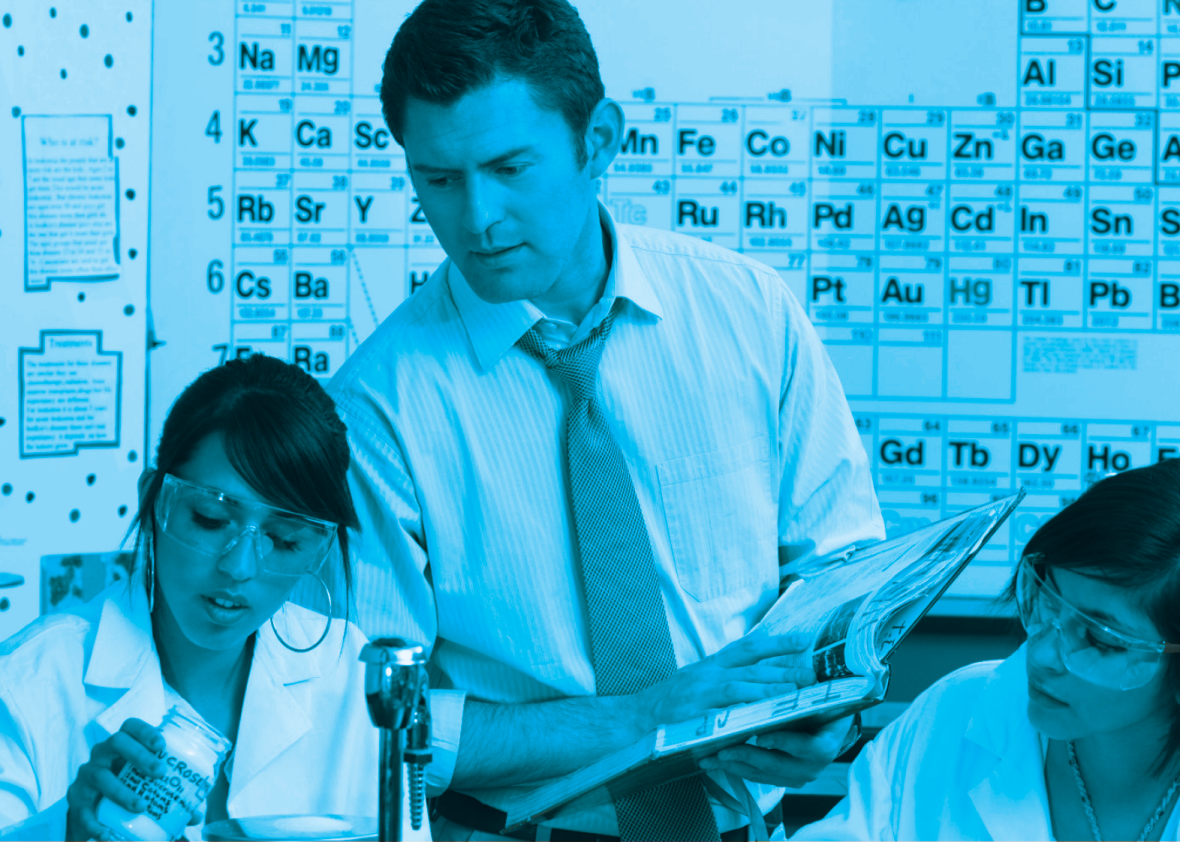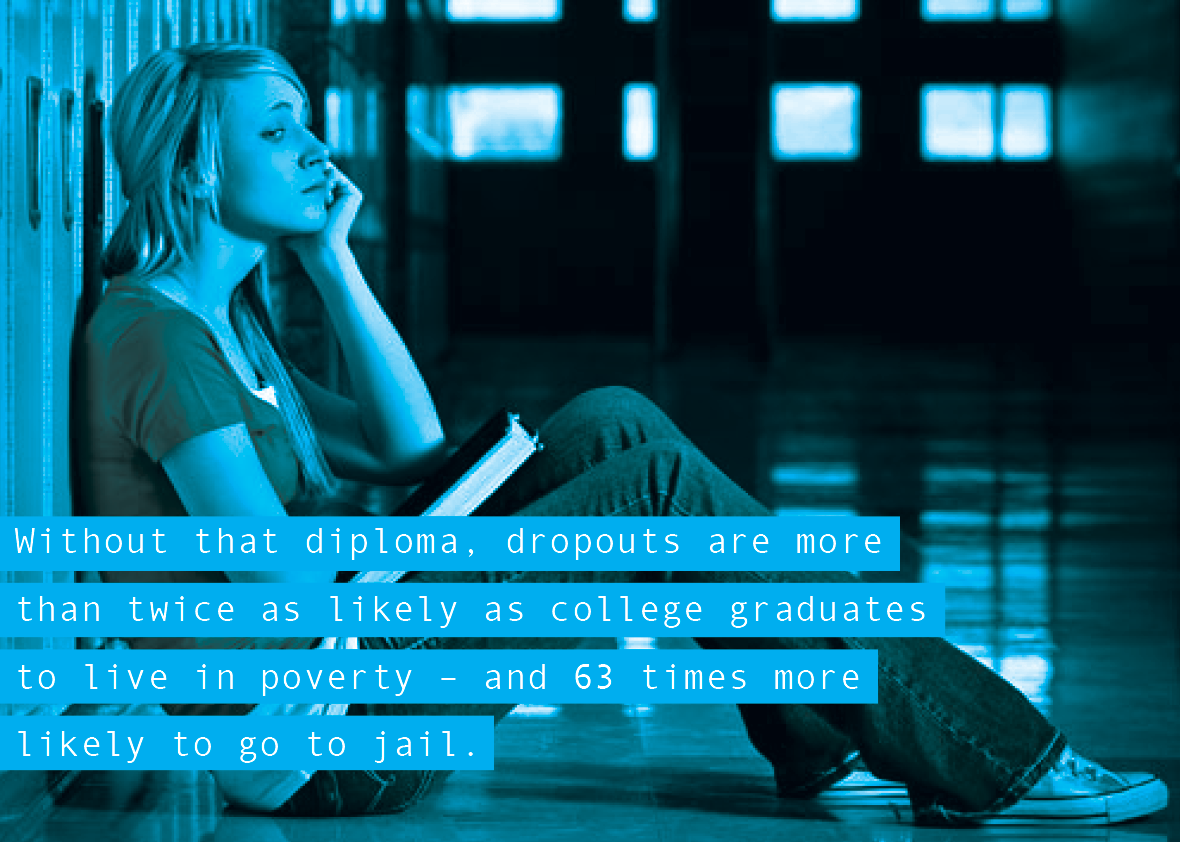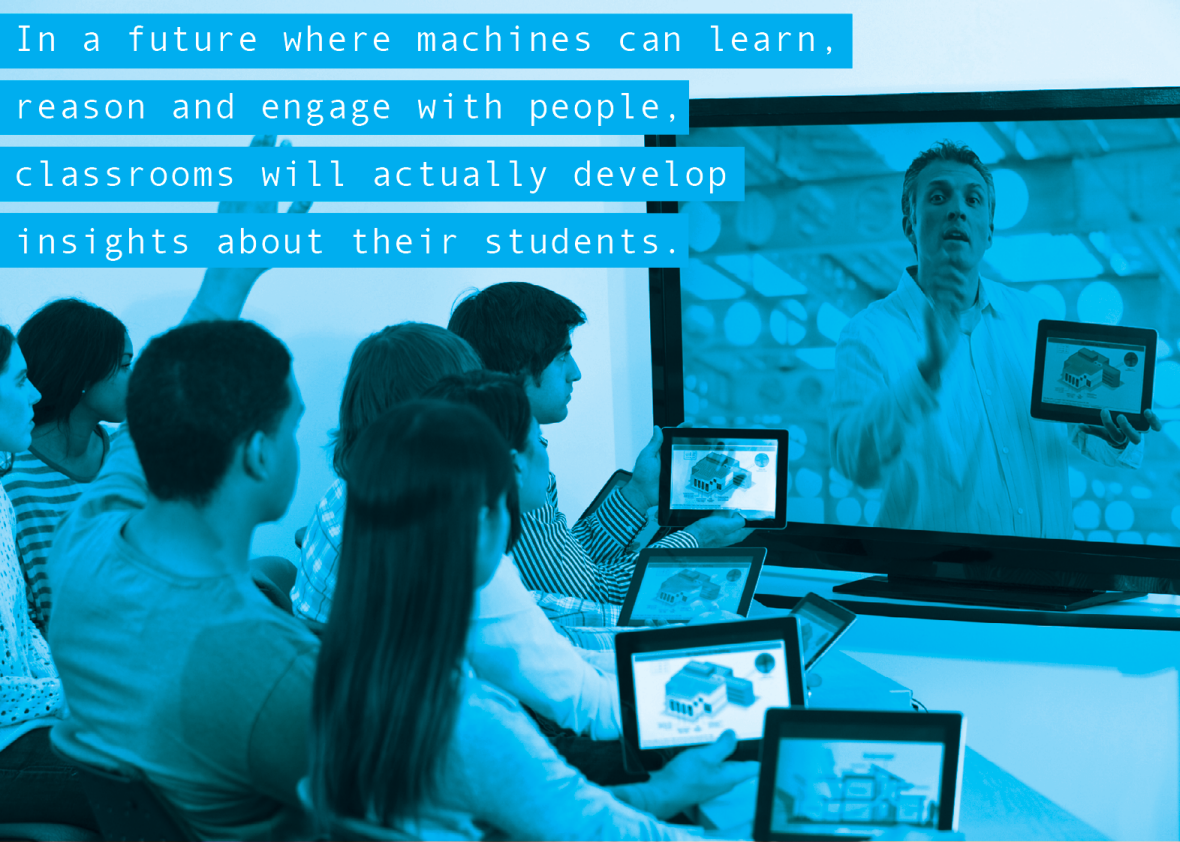
A School Just for You

Every day in America, as many as 8,300 high school students drop out of school.
After that, things typically go even further downhill. A high-school dropout is out of the running for 90 percent of U.S. jobs and will cost taxpayers nearly $300,000 each over a lifetime, according to a study by Northeastern University.
Without that diploma, dropouts are more than twice as likely as college graduates to live in poverty – and 63 times more likely to go to jail.
What if technology could improve these grim statistics? What if the right data could help teachers intervene to prevent kids from dropping out?
A Growing Gap
The clock is ticking for America’s workforce: By 2020, nearly 6 million high school dropouts will go without work, predicts management consulting firm McKinsey and Company. On the other side of the coin, there will be a shortage of 1.5 million college graduates to fill highly skilled jobs.
Businesses are so aware of America’s growing skills gap that they factor in the quality of local schools when deciding where to set up shop. They need assurance that the educational system will produce future employees with the skills to keep pace with rapid technological innovation.
If schools don’t produce hirable graduates and business districts don’t grow, then jobs, taxes, and other investments in local communities are jeopardized. “Education is a key pillar of any economic development strategy,” said Riz Khaliq, marketing and communications director for IBM Global Public Sector and Smarter Cities.
A One-Size-Fits-All Tradition
The good news is, as technology changes the skills required for future jobs, it’s also changing the way students are educated.
Traditionally, education has been a one-size-fits-all model with students sharing the same curriculum, classes, teachers, and books. While many teachers differentiate learning for students, large class sizes and a lack of resources often limit how much they can do.

Schools Swimming in Data
In the age of the Internet, cloud computing, and mobile devices, however, more data exists to help teachers and administrators address individual student needs than ever before.
Schools are collecting volumes of student data from many sources, including grades, test scores, digital learning profiles, behavior reports, attendance records, and demographic data
“Our schools are swimming in data,” said Bruce Gardner, North America Education Director for IBM. “These days we just need to help schools organize it and direct it in a way for it to improve instruction, and ultimately improve outcomes.”
Making it Personal
Harnessed correctly, insights from that data will lead to the dawn of a new era of education: a personalized learning experience for students.
“It’s about truly understanding individual student requirements, truly understanding the resources that are available to address those requirements, and then using data and analytics to align those two things,” Gardner said.
IBM’s analytics can also integrate that data to provide a more holistic picture of how each student learns. When combined with a database of curriculum materials, best teacher practices, and outside education resources, the technology can also predict which students are at risk — and recommend solutions, said Gardner.
IBM included education on its 2013 list of five innovations that would change people’s lives over five years. In a future where machines can learn, reason, and engage with people, classrooms will actually learn about students, the company predicts.
By increasing student engagement and enhancing teacher effectiveness, personalized learning has the potential to improve academic performance and reduce those troubling dropout rates.
The Healthcare Prototype
That doesn’t mean that technology will replace teachers or the human insights that are so critical to understanding students’ needs. “What technology can do is make the process easier for the teacher so that the time constraints and the data constraints are not inhibitors for learning,” Gardner explained.
To understand the potential impact of technology to transform education, one only has to look at the improvements that big data and analytics have created in the field of healthcare. Even the best emergency room doctors have limited solutions without a complete patient history. When comprehensive patient histories were provided to doctors at the point of care, however, patient outcomes improved dramatically.
“We’re now applying that same philosophy to education,” said Khaliq, where comprehensive student profiles could improve learning outcomes in the same way that patient data improved health outcomes.

Transforming Education
Georgia’s Gwinnett County Public Schools (GCPS) is partnering with IBM to put that theory to the test, and provide personalized learning to its 170,000 K-12 students.
The district’s eCLASS project uses analytics to enable teachers to identify both at-risk students and high performers, said Steven Flynt, chief strategy and performance officer for GCPS. In the process, GCPS hopes to not only improve student outcomes, but also to attract more business investment to the county.
With IBM’s newest analytics, GCPS is also starting to use prescriptive data that can not only indicate how students are doing, and predict what they might be able to achieve, but also recommend solutions based on what worked in other cases, Flynt added.
“Being able to quickly recall what has helped in the past can provide teachers with valuable tools to solve future problems,” Flynt said.
Planning the Future
But personalized learning isn’t just for K-12 students. Higher education can benefit from technology that enables students to leverage online learning to get the courses they need to graduate on time.
IBM’s analytics can also help align students with their prospective career pathways. Australia’s Deakin University, for example, is using IBM’s Watson technology to create a Student Advisor application to give students real-time answers to school-related questions.
Eventually, students will be able to get personalized responses, as well as recommendations on career paths, job prospects, and alternative routes through their degree programs, wrote Simon Eassom, Global Manager of Education Solutions for IBM Smarter Cities, in a recent blog.
Leveling the Educational Playing Field
Perhaps most important, the cloud-based nature of IBM’s technologies gives all schools the potential for personalized learning, and can help level the playing field for education in every county and state, said Khaliq.
“The data that is available today is an important natural resource for the next century,” he said. “And education systems that leverage that data are going to be more competitive in the global economy.”
